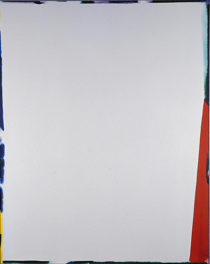
Battlefields, Cold Harbor (Battle), 2003, Sally Mann. Gelatin silver print, 39 x 49 in. National Gallery of Art, Washington, Gift of the Collectors Committee and the Sarah and William L Walton Fund. Image © Sally Mann
At a moment when debates about Civil War monuments have grown increasingly heated, artist Sally Mann’s Battlefields series asks us to consider how the history of this era weighs on us today. Through a labor-intensive, nineteenth-century photographic process, she evokes the dark atmosphere of the Civil War that lies buried in the contemporary landscape. Her photographs collapse past and present, as the artist, in her own words, aims to “help people see the landscape in a different way.”
Part of a larger body of work titled Last Measure (2000–2003), Battlefields comprises images of former battle sites of the American Civil War. Many represent locations that were major turning points in the war, such as Antietam and Manassas. A Southern artist based in Lexington, Virginia, Mann is geographically closely connected to battle sites in her home state and Maryland.

Battlefields, Chancellorsville (Rever’s Turn), 2002, Sally Mann. Gelatin silver print, 38 ¾ x 48 ½ in. The J. Paul Getty Museum, 2018.1. Image © Sally Mann, Inc.
A Historic Technique
Although Mann started the series in 2000, her process is grounded in the nineteenth century. She used the wet-plate collodion technique, whereby a glass plate is coated with a light-sensitive collodion solution, exposed in a camera, and then immediately developed. Invented in 1851, wet-collodion negatives were in wide use by the time of the Civil War.
Three works from the series—Battlefields, Chancellorsville (2002); Battlefields, Cold Harbor (Battle) (2003); and Battlefields Antietam (Black Sun) (2001)—share a ghostly, ethereal presence. Each print demonstrates Mann’s distinctive use of the wet-plate collodion technique. Embracing what the artist calls “the angel of uncertainty,” Mann allows the flaws in her negatives–holes, streaks, and pour marks caused by improperly applied collodion, as well as dust embedded in the surface of the negative–to take on new visual resonances, resembling bullets flying through the air or fiery waves devastating corn fields.
Mann takes aesthetic advantage of these technical flaws, allowing the process to turn bucolic pastures into war-torn scenes. The imperfections scar the landscape, speaking to memories of pain and turmoil. The works are also large—Chancellorsville measures 38 x 48 inches—lending monumentality to the scenes.

First Artillery New York, Chancellorsville, Virginia, May 1, 1863, attributed to A.J. Russell. Albumen silver print, 9 7/16 × 12 15/16 in. The J. Paul Getty Museum, 84.XP.477.9
The Battle of Chancellorsville
The battle of Chancellorsville was fought over seven days, from April 30 to May 6, 1863. Fighting began in the early evening but paused at sunset on the first night. The darkness of Mann’s photograph evokes the tension and uncertainty of soldiers waiting at night for the battle to resume. The turn in the road hints at this wavering future, as the distant light ahead signals hope for a new day.
A photograph in the Getty Museum’s collection by A. J. Russell shows soldiers from the First Artillery of New York preparing for battle in the bright sunshine on the second day of conflict. Although the Union lost this battle, it did not mark the end of the war. The Confederacy also suffered significant losses: the legendary general Stonewall Jackson died after this battle.
In Battlefields, Chancellorsville, acquired by the Getty Museum in 2018, a winding dirt path draws the viewer into the image. A hazy, soft glow lightens an otherwise darkened landscape. It takes a moment for the eyes to adjust, as if in a darkened room, and make out the subtle line that divides the trees and ground. The road draws our focus to the center of the image, its brightest point, where clouds break through the shadows. The sky above is filled with wispy vapors, emanating from the central light source. Mann urges her viewers to see these battlefields in a different light, strange yet familiar, requiring our attention.
Battlefields both brings us closer to history and encourages us to look more closely at our current surroundings. Mann helps us see contemporary places and history anew as we continue to come to terms with the lasting impact of the American Civil War.
_______
Chancellorsville is on view with other works by the artist in Sally Mann: A Thousand Crossings until February 10, 2019.




Comments on this post are now closed.